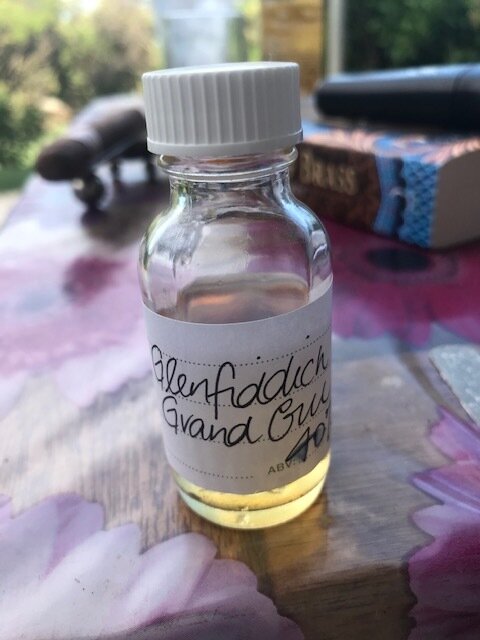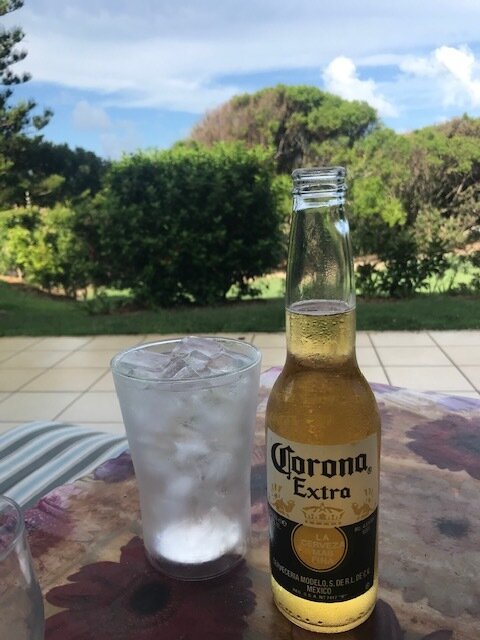Robusto Rumble – Romeo y Julieta Exhibición No 4 – Corona Extra - Glenfiddich Grand Cru.
My apologies to the Chinaman whom I must have run over while he was chasing the black cat under the ladder while juggling a mirror. Because it seemed luck had deserted me. Could I really be so unlucky?
But, so it continues. Those who have followed the Robusto Rumble will know of the disappointing disaster that was the El Rey del Mundo, a woeful cigar for me on that occasion. As it was my last day at the coast, I tried again with the R&J 4 and a basic beer – what could be better than lying back with a cigar, a great book and the sound of the waves coming up from the beach, on a beautiful Queensland summer day (not too hot, fortunately). And that Glenfiddich. I hoped that this cigar might be worthy of it.
Surely, it could not happen again.
As carefully as possible, I lit this cigar and started. Seriously? Bitterness, acridity, sourness, ashy notes. Say it ain’t so! Sulphidic. No, no, no!
And this continued for about the first half inch. Not best pleased. I lay there moaning and grumbling to myself. But no hint of redemption. Anyway, I started to daydream. Seriously, I could have daydreamed for Olympic Gold. It is one of my best skills. I found myself on the saltwater flats of Cuba chasing bones, in the twisted and Tolkienesque streams of New Zealand after big brown trout. And then as suddenly as a bite from one of these glorious fish, I was back to reality. Back to the cigar.
And without me noticing, it had transformed itself. No bitterness, no ashy notes. Instead, the most gloriously subtle, mild and gorgeous cigar. Talk about your ugly duckling becoming that magnificent swan.
This was finely balanced, thoroughly enjoyable. Hints of cherries and raspberries emerged. Wonderful stuff. And so it maintained this. We say we want evolution in a cigar, and we do, but I did not want this to change. It did, but only to get even better. A note of toast emerged. A light dusting of cherry jam on toast. And before long, I realised that while it appeared so mild, there was actually deceptive power underneath.
Sure, the last inch exhibited some youth and a little more raw heat, but a mere peccadillo. Loved it. I gave it 94, and the only reason it did not score higher was the awful opening (if you judged a cigar on the first few puffs, this would have failed and been sorely misrepresented). So far, with not many remaining, this has been the most intriguing, interesting and enjoyable of all the Robustos.
With the beer, it went as much as one would think. The Corona, icy cold on a summer day, was very pleasant and it did nothing to harm the cigar. But it was hardly the match for which we look.
The Glenfiddich Grand Cru was another matter. Not yet available in Australia (it will sit around $390 I believe), but released in other parts of the world – the first in the ‘Grand’ series (two more to be released this year). I know some love Glenfiddich, while others dismiss it. Even if you are a Glenfiddichphobe, if you can, try this. It is a cracker. Beautifully elegant – and a brilliant match for this cigar.
It and Glenfiddich are definitely worth a look.
Glenfiddich has a long history, back to a gent called William Grant. A century and a half ago, Grant was nothing more than a bookkeeper with a dream of making the “best dram in the valley.” He worked at the Mortlach Distillery and, at the age of 47, quit his job and paid £119, 19 shillings, and 10 pence for a copper pot still and associated equipment and, with the assistance of his seven sons and two daughters, set off to make that “best dram.”
Christmas Day 1887 saw the first spirit shared amongst the family, and his little distillery was dubbed Glenfiddich, meaning “valley of the deer.” As soon as he could, Grant purchased the nearby Robbie Dhu Spring, an incomparable source of quality water for whisky. The nearby stream was actually called the Fiddich.
The Grant family empire is now far more extensive than that initial effort. Glenfiddich remains the only Speyside distillery distilling, maturing, and bottling on-site (these days, the 12-Year-Old is an exception). Brian Kinsman has been the malt master for a decade and has earned a reputation for innovation of the highest standards. This is always a bit of a high-wire act as, when your company sells around 14 million bottles of malt every year, you must also keep the traditional customers happy.
A few years ago, I picked up a couple of bottles of Glenfiddich’s one-off ‘Snow Phoenix’ in duty-free when returning from a fishing trip to New Zealand. Had I known that the tins in which they came would end up being more valuable than most whiskies, let alone what the bottles now go for, I may not have been so quick to enjoy them.
Grand Cru is a 23-Year-Old malt, finished in French cuvée oak casks. The PR team has been very active with this one – “sets out to redefine moments of celebration,” “a new and extraordinary drinking experience,” “created for the non-conformists,” “uniquely crafted as a surprising delight,” “for those tearing up the rule book.” Always good to see the marketing department earning its dosh. More usefully, they advise that the whisky is matured in American and European oak casks before it is finished in French cuvée casks for six months. It is the only Glenfiddich malt to receive this treatment. The six-month period was the result of a series of experiments as to what length of time best suited the malt.
To be honest, I was a little puzzled as to what exactly French cuvée casks are, but apparently we are talking casks from Champagne. Well, I am talking Champagne. They are talking “a great sparkling wine from France” as they are keen not to draw the wrath of the CIVC, who tend to be a touch litigious if anyone uses their name. We will assume Champagne.
The majority of champagne houses tend to use stainless steel rather than oak casks, but we are seeing more and more of it through the emergence of quality growers like Selosse and Collin, among many others. Producers like Krug and Bollinger also use oak, however, normally these are casks that are very old as the aim is not to give too much cask character to the wine. How much is given to the malts is a question to be explored. Unfortunately, commercial agreements prevent Glenfiddich from revealing the source of its casks.
Kinsman believes that these casks accentuate the floral notes of the whisky. The Grand Cru is 40 percent, and the bottle is 700 ml.
Ever so slightly pale in colour, it walks a fine line between the richness it offers and the elegance and floral notes. A hint of glacé fruit, brioche and apple orchards. There is vanillin oak on the palate, with white chocolate and stone fruits, spices, and the merest hint of raspberry. The texture is cushiony soft and creamy. Excellent finish, great length. This malt is impeccably balanced and complex throughout. This is a malt that is finely crafted and utterly superb.
A malt which our cigar more than deserved.
KBG








